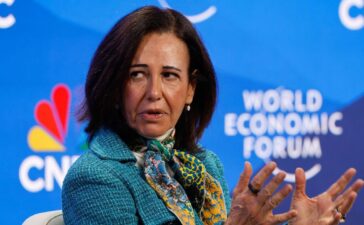Thematic funds, which focus on specific sectors or themes, have gained significant been an investor darling for the last one year. These funds have attracted substantial inflows, particularly in the areas of infrastructure, manufacturing, business cycles, and public sector undertakings (PSUs) in the June quarter. Among active equity, Thematic funds saw net inflows of Rs 20,000 crore, shows data analysed by Motilal Oswal.
Key Highlights:
-
Active Thematic Funds: Investors poured Rs. 20,000 crore into active thematic funds. -
Sectoral Focus: Infrastructure, manufacturing, business cycle, and PSU funds witnessed strong inflows, exceeding Rs 2,000 crore each. -
Passive Thematic Funds: PSU-focused passive thematic funds received the highest net inflows among their passive counterparts, despite relatively smaller AUM. -
However, thematic investing carries inherent risks, and investors should carefully evaluate the underlying themes and potential risks before making investment decisions. -
Infrastructure category lead the Thematic segment
Infrastructure category lead the Thematic segment

All data in thousands of Rs cr. Source/Disclaimer: AceMF, MOAMC.
-
The infrastructure sector emerged as a clear leader, attracting net inflows of Rs 5,600 crore in active funds and Rs 400 crore in passive funds. -
The manufacturing sector also witnessed strong interest, with net inflows of Rs 3,400 crore in active funds and Rs 400 crore in passive funds. -
Business cycle funds received net inflows of Rs 2,600 crore in active funds. -
The consumption sector saw moderate inflows of Rs 800 crore in active funds and Rs 200 crore in passive funds. -
Public sector undertaking (PSU) funds were particularly popular among passive investors, attracting Rs. 63,200 crore in net inflows.
Active vs. Passive Thematic Funds:
Active Thematic Funds: These funds are actively managed by fund managers who select stocks based on their research and analysis.
Passive Thematic Funds: These funds track a specific index and aim to replicate its performance.
Key trends in mutual funds in July 2024, according to India Infoline:
Average assets under management (AAUM) of all mutual fund schemes combined, touched a life-time high of Rs 64.71 Trillion in July 2024; compared to Rs 61.33 Trillion in June 2024, Rs 58.60 Trillion in May 2024, Rs 57.01 Crore in April 2024, and Rs 55.01 Trillion in March 2024. That translates into dollar AUM of $773 Billion.
In July 2024, the accretion in equity AUM was triggered partially by index accretion and largely by flows across active debt funds, active equity funds, hybrid funds and passive funds. In June, the heavy debt fund redemptions were triggered by quarter-end treasury considerations.
In July 2024, active equity funds and liquid funds gained AUM share while the share of active debt funds and passive funds was lower. This can be attributed to the relative value gain by equity funds. The net results was that, active equity fund share in July 2024 surged by 30 bps from 59.6% to 59.9% over June 2024 while the share of active equity funds in overall AUM is 790 bps higher on yoy basis.
Are individual investors playing a bigger role in mutual fund AUM compared to institutions?
The answer is yes. “One reason could be that the surge in SIP flows and NFOs; both of which are predominantly retail products. SIP flows at Rs 23,332 Crore and the NFO flows of Rs 15,565 Crore, come largely from the Gen-Z and millennial investors with a financial planning perspective. Hence these flows tend to be stickier. This segment also reflects India’s demographic dividends. Another factor could be that the reduced interest in debt funds is forcing investors to gravitate towards equities in search of higher returns,” said IIFL in a note.
Key Highlights:
-
Gross SIP flows reached a new high of Rs. 23,332 crore in July 2024. -
Individual investors now account for 61% of the overall AUM, up from 57.5% in July 2023. -
Institutions and corporates have reduced their share in mutual fund AUM from 42.5% to 39.0% over the past year. -
Individual investors have allocated a significant portion of their portfolios to equity funds, holding an 88% market share. -
Retail investors’ share in passive funds (index funds and ETFs) is only 10%, indicating a preference for actively managed funds. -
Institutions and corporates have shifted their focus from longer-duration debt funds to shorter-term liquid and money market funds.
First Published: Aug 22 2024 | 9:46 AM IST
















